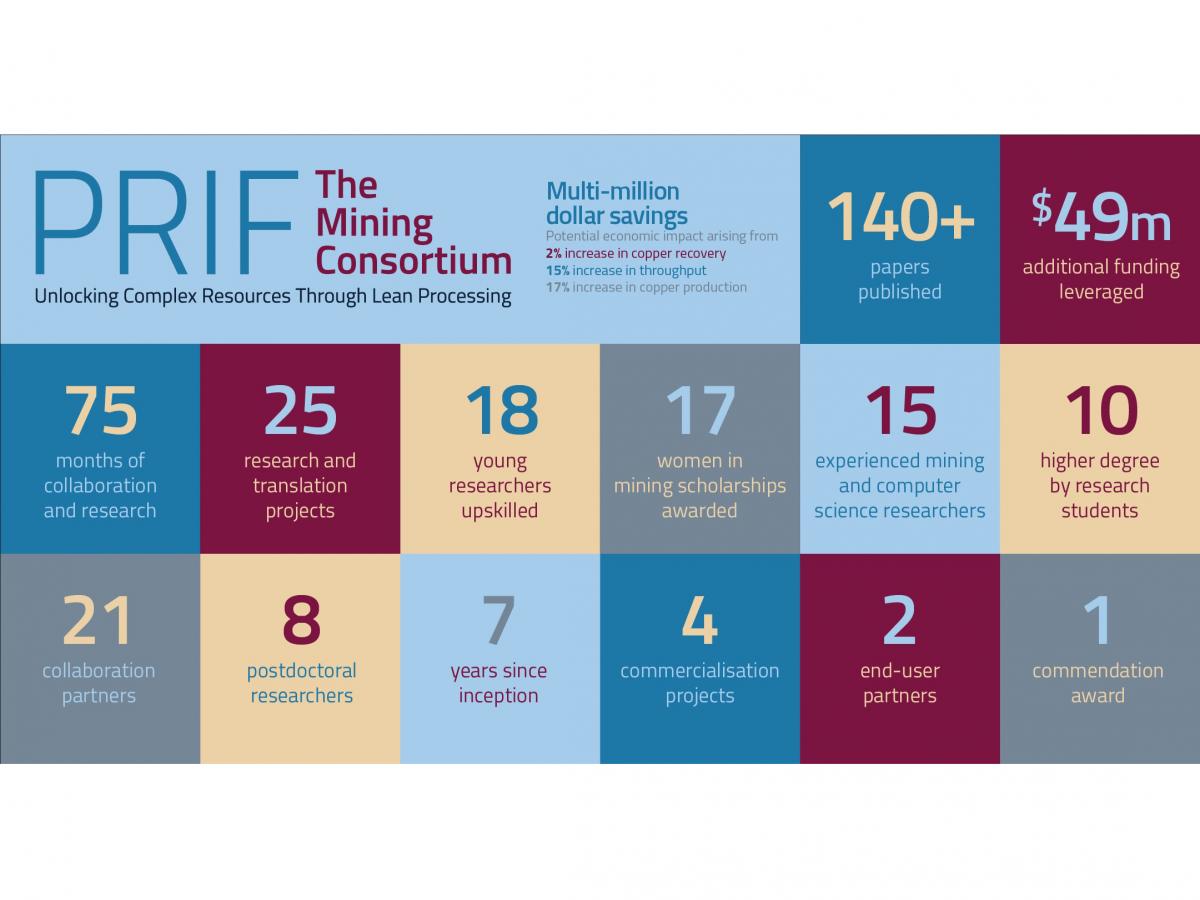
A South Australian-based consortium of universities including the University of Adelaide has worked with METS partners, mining companies and key stakeholders to unlock significant economic potential. Innovative research projects have increased copper recovery, throughput and production, resulting in millions of dollars' worth of potential benefit to Australia.
The Integrated Mining Consortium, funded by the South Australian Premier's Research and Industry Fund (PRIF), has been running since 2017 under the banner of 'Unlocking Complex Resources through Lean Processing' for end-user partners BHP and Oz Minerals (now BHP). The Consortium is holding its final meeting on Thursday 25 July.
The SA Government invested an initial $4 million, with industry injecting an additional $1 million. The Consortium has catalysed total funding and support amounting to $32 million across its 17 industry partners since its start.
The University of Adelaide's Professor Nigel Cook, Director and Convenor of the Consortium, said the program has been an overwhelming success.
"The Consortium has maximised value and lower costs for mineral production using machine learning, sensors and data analytics," said Professor Cook.
"With 'easier' resources already exploited, we wanted to tackle those that are harder to mine or process. These 'complex' resources are more diverse in character and have a flow-on effect through stockpiling, crushing, grinding and milling, which leaves the entire mining value chain open to optimisation."
The economic impact of the Consortium's work, which will wrap up on 31 August 2024, is based on a predicated two per cent increase in recovery, 15 per cent increase in throughput and 17 per cent increase in production for the industry.
Global demand for copper is expected to soar in the coming decades, with production from existing and proposed mines unable to meet demand without new discoveries and better ways to recover copper from low-grade resources.
The University of Adelaide and the University of South Australia brought together research expertise in resource modelling, mining, geomechanics, sensors, data analytics, computer optimisation, process modelling and mineral processing. A pool of supporting partners evaluated technologies and identified commercialisation pathways alongside dissemination and marketing.
Professor Cook said that the key to success of such consortia is fostering collaboration between partners as an approach to combining research and industry knowledge for practical outcomes.
"We have worked together with the exploration, mining and minerals processing companies that will ultimately consume the products and systems we create. We also rely heavily on our expert partners to translate research into industry-ready products and services," said Professor Cook.
In all, 14 research and 11 translation projects were established to break down and tackle multiple elements of the upstream and downstream mining processes.
In terms of delivering on the goals, the numbers only tell part of the story, according to Professor Cook.
"Industry needs relevant, real-world applications that make a difference, and our programs have delivered on all fronts. Aligning the research with data-driven deliverables future proofs the outcomes for any miner of any commodity in any operating environment," said Professor Cook.
Equally as significant as delivering on research outcomes, the Consortium played an important role in training the next generation of scientists, engineers and data analysts.
"Australia desperately needs to strengthen its workforce with scientists skilled in the technologies of the future and programs like this help mining to be one of the industries to benefit," said Professor Cook.
The Consortium has boosted the skills of 18 young researchers, awarded 17 scholarships to Women in STEM, and has brought together 15 experienced mining and computer science researchers, 10 higher-degree-by-research students and eight postdoctoral researchers.
Networks developed during the PRIF Consortium have enabled us to leverage $47 million dollars for new projects, with others likely to follow, that build on the research capacity and infrastructure now in place. While activities wind up in 2024, the Consortium has placed Adelaide and its two universities at the forefront of researching complex mining and mineral processing.
The University of Adelaide, and the future Adelaide University will continue to engage with key industry players around new research opportunities. These will be designed to capitalise on South Australia's extraordinary metal endowment as much as efforts to reduce energy costs, lower water usage, and address ESG concerns, while reducing environmental impact. South Australian copper will play a critical role in enabling the transition to green energy production well beyond our state. University of Adelaide researchers stand ready to play their part.






